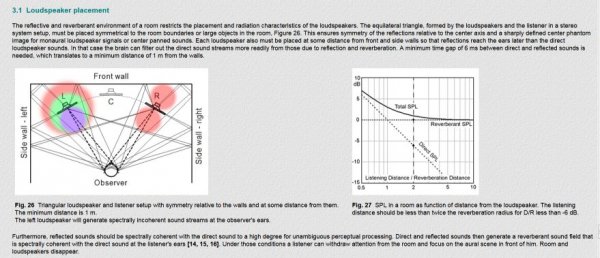Hi Microstrip,
Thanks. Can you please elaborate a bit on "some proper reflection" vs. smearing from too much reflection?
You are just asking the critical question. The more elucidating information is this aspect I have found comes from the Stanley Linkwitz site http://www.linkwitzlab.com. Surely it is his own view on the subject - it interested me a lot as I owned (and still own ...) big dipoles. Some people strongly disagree with him on the role of reflections in stereo. On this subject he writes " Each loudspeaker also must be placed at some distance from front and side walls so that reflections reach the ears later than the direct loudspeaker sounds. In that case the brain can filter out the direct sound streams more readily from those due to reflection and reverberation. A minimum time gap of 6 ms between direct and reflected sounds is needed, which translates to a minimum distance of 1 m from the walls. "
Please read point 3.1 Loudspeaker placement of the page of http://www.linkwitzlab.com/Recording/AS_creation.htm



